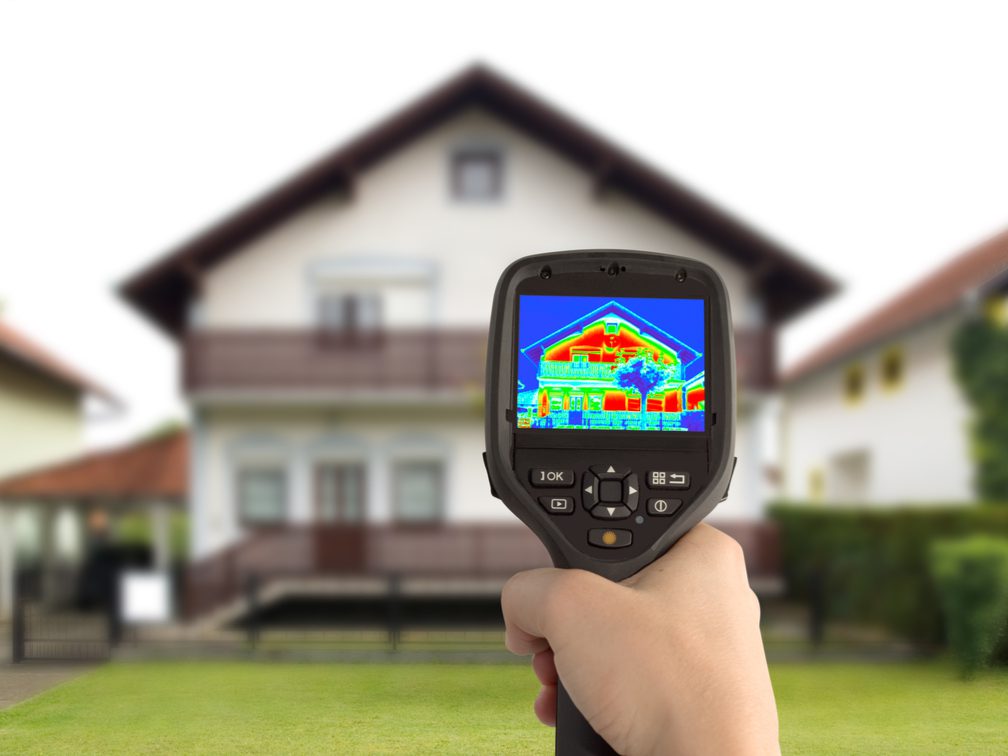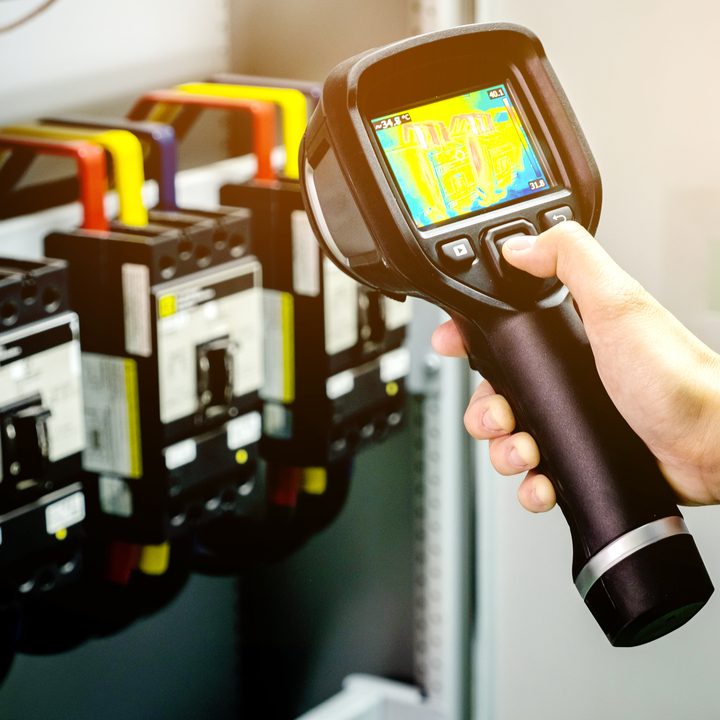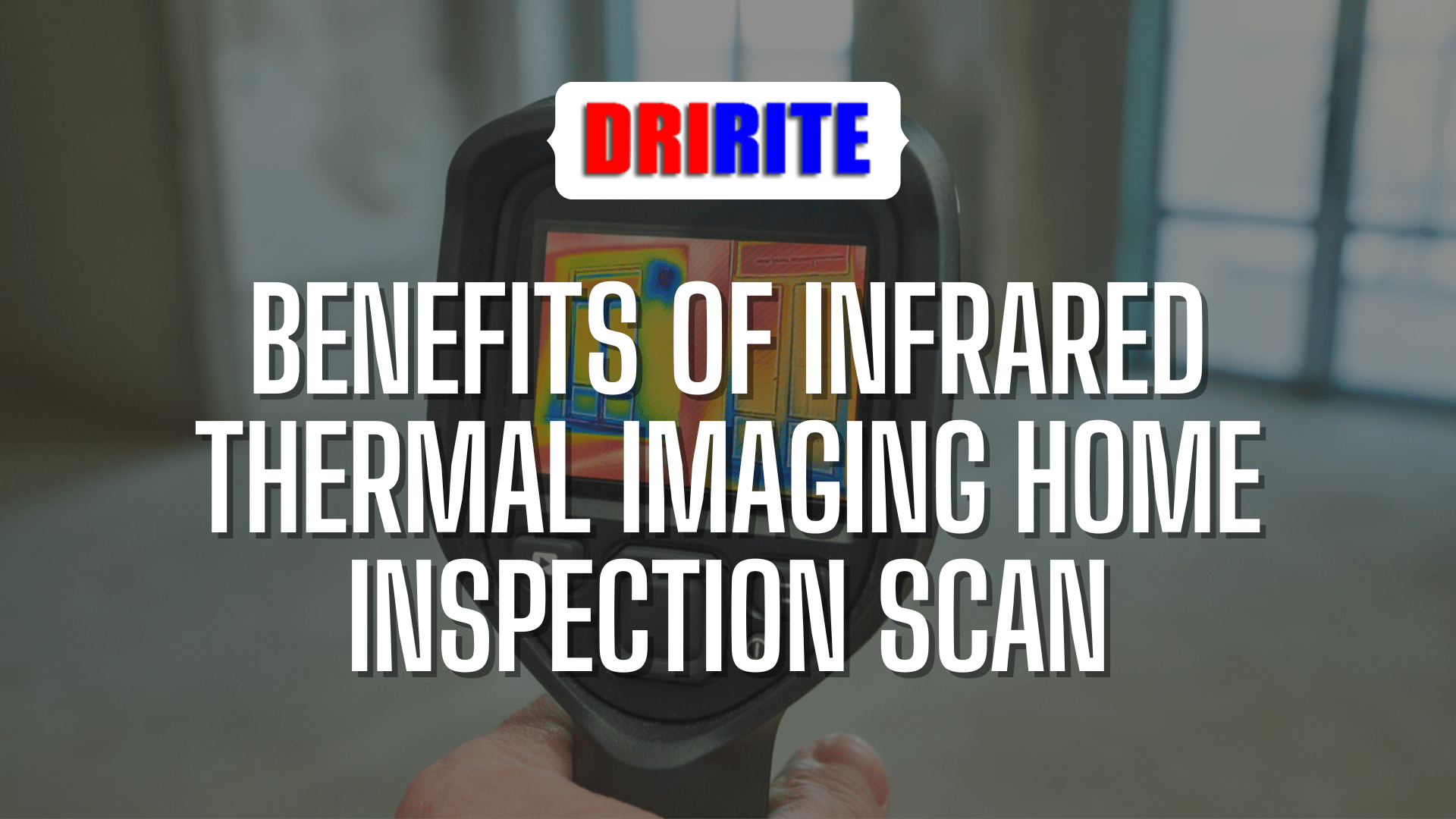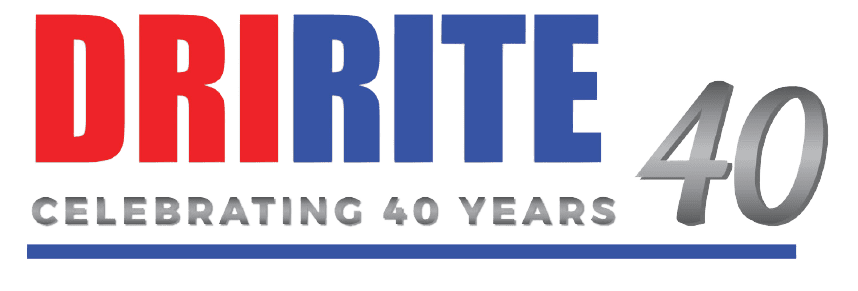In just a few years, technology has completely altered how we live. So why wouldn’t we utilize innovative technologies to detect water leaks and other abnormalities in homes and businesses? Thermal imaging senses temperature differences related to water intrusion, overheated electrical wires, lack of insulation, and clogged HVAC ducts. Infrared cameras use heat signatures to detect the smallest temperature differences in items, objects, and furniture.
Infrared thermal imaging for a home inspection has the potential to save you thousands of dollars. If you’re looking to protect your real estate investment, imaging for your home inspection may be right for you.
How Thermographic Inspections Work
Ensure your potential property is free from damage, heat/air loss, and abnormal electrical components with an infrared scanning inspection. This type of assessment examines the inside or outside of a building to detect abnormalities not visible to the naked eye. In addition to detecting pests and electrical malfunctions, thermographic imaging locates moisture behind walls, under floors, and in the ceiling.

How Is a Thermal Imaging Home Inspection Performed?
Because homes absorb heat from the sun, thermal inspections are done in the evening. After the sun goes down, a thermal image inspector runs water through the homes’ showers, tubs, sinks, and toilets to ensure everything operates properly. In thermography, colors to signify warmer areas include white, yellow, and red. Whereas cool spots are visible in blue, black, and other dark hues. Multi-level home inspections start from the top floor and work their way down.
Your inspector will notify you and the existing owner of any findings. Safety-related issues will require repair before the home can be sold. Many potential buyers opt for thermographic home inspections because it’s accurate and locates all issues the first time. Speak with your local thermal imaging inspector to know if your home has structural defects, broken seals, or other issues.
What Does Infrared Thermal Imaging Show You During Inspections
If there’s one technology that can reveal hidden issues in your home, it’s thermal imaging. Structural concerns, pest infestations, ventilation issues, and more are all seen with infrared technology. Discover everything you need to know about your future property with non-invasive testing.
1. Mold and Moisture Damage
Thermal technology doesn’t prove that mold is present, but it does detect condensation. Depending on the amount of time the area has been moist, mold or mildew may be present soon. Additional tests will be needed to confirm mold, mildew, or other contaminants.
2. Roofing Leaks
Sometimes roof leaks are visible; sometimes they aren’t. Luckily, infrared technology locates all roof leaks. During the summer months, water may show up as warm spots in the summer months and cold spots in the winter months.
3. Detect Electrical Faults

Just about everything increases in temperature before complete system failure, which is why thermal imaging technology is so helpful. Get in-depth insight into the condition of your property before an electrical fire starts.
4. Structural Defects
We’ll scan the walls, floors, and ceilings. If there is missing insulation, damaged framing, and other hazardous structural problems, we’ll discover it without invasive testing.
5. Hidden Plumbing Leaks
The chances of noticing a plumbing leak right away are very slim. However, thermographic inspections are extremely effective. With this type of technology, leaks are visible without tearing down roofs or walls to access pipes.
Common Areas to Inspect With Infrared Thermal Imaging
Thermal imaging is a cost-effective and accurate diagnostic tool used to improve efficiencies, manage energy, improve product quality, and enhance safety. Here are the areas most often assessed during a home inspection:
Exterior Walls
Inspectors will look for penetrations through exterior windows, walls, and doors, as well as roofline drafts.
Ceilings
Inspectors will look for roof, attic, ceiling, and skylight leaks. Then we’ll check for ventilation and insulation issues.
Plumbing Fixtures
Inspectors will check all plumbing fixtures and their surrounding areas. The same process will be repeated for water appliances.
Foundation
Crawlspaces, basements, and other low points of the house and its foundation will be assessed to determine any damages.
Hire Your Infrared Thermal Imaging Inspection In The Tampa Bay Area
You should always conduct a thorough inspection of your property before you pay for it. It doesn’t matter what the previous owners say or how recently the establishment was built. A thermal imaging home inspection scan is always worth it. Utilize proven techniques to locate and minimize damages.
Find hidden leaks and discover the source of potentially hazardous malfunctions in your home or business with DRIRITE®. Our project managers utilize infrared imaging cameras and other tools to monitor your property, ensuring accuracy and efficiency during the drying process. Get a level of confidence that only DRIRITE® can give.

Chief Executive Officer
Mike Campbell is a highly experienced professional specializing in structural drying, mold remediation, and environmental consulting. With certifications such as OSHA HAZWOPER, council-certified microbial remediator, and state of Florida licensed mold remediator, he offers tailored solutions to clients at DriRite. With specialized training from the IICRC, Mike is equipped with advanced skills in categories such as applied structural drying, commercial drying, and water damage restoration. This expertise allows him to deliver comprehensive and effective solutions to water-related issues. His dedication to providing exceptional service and expertise makes him a valuable resource in the field.
Comments are closed.



